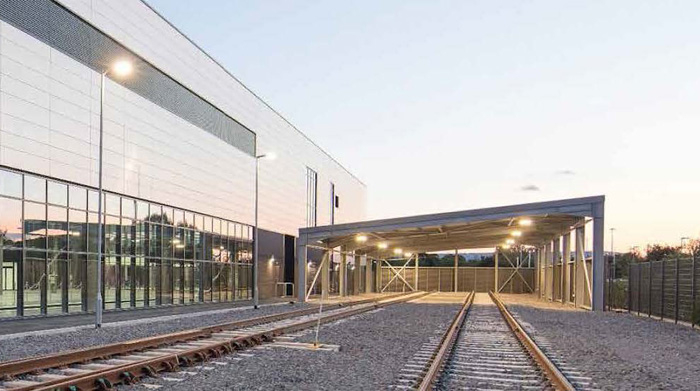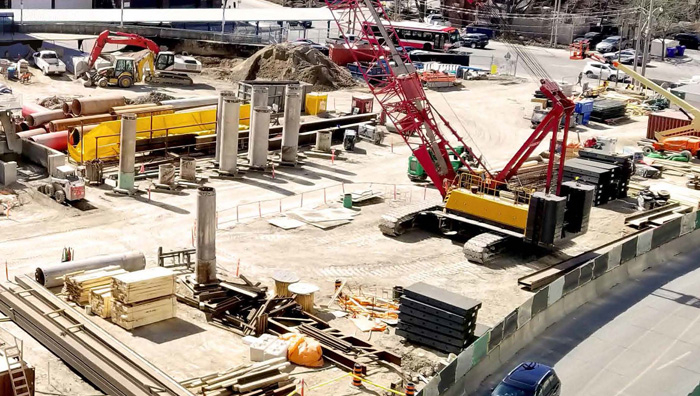Willmott Dixon deploys cloud-based document and information management solution to help deliver the National College for Advanced Transport and Infrastructure defect-free and on-time
The National College for Advanced Transport and Infrastructure (NCATI), the new name for the National College for High Speed Rail (NCHSR), will play a key role in helping provide the higher-level skills needed to transform the UK rail and transport infrastructure network. Willmott Dixon, the privately-owned contracting and interior fit-out group, was awarded the delivery.
The project duration was 15 months and was valued at £21.2m, comprising both extensive teaching and workshop space. The complexity of the project required a system that brought all the various groups together to work from a common data environment, allowing Willmott Dixon to surface and address challenges early and often.
Initially, NCHSR was not a BIM level 2 requirement from the stakeholders. However, prior to the project starting, Willmott Dixon made the decision to deliver all new projects to BIM Level 2 after seeing the benefits on previous projects.
The collaboration conundrum
One of the largest challenges Willmott Dixon faced in completing the project was the interoperability between software platforms — between the architects, structural engineers, varying internal standards and several software solutions, working off the same set of data was a near-impossibility.
Once the supply chain extended to the inclusion of fabrication software, the issue became even more unmanageable, resulting in more time spent resolving than actually federating the models. Due to interoperability issues, the company couldn’t create a data file so the simplest method for resolving this issue was for the architects to produce a coordinate setting out drawings for the project team to base the model from.
Time and costs were increasing pressure on the administrative burden that arose from using more traditional paperbased processes. The company was looking for a system that would automate transfer of accurate, complete and unambiguous information that could increase productivity, reduce cost and help ensure a smooth handover.
Master view
To operate from a single system, Willmott Dixon implemented Viewpoint For Projects across its whole construction process. VFP is a cloud-based document and information management solution which enables customers to share, control and collaborate on project documents with dispersed projects teams.
“Across the business, we all use VFP,” says senior design coordinator James Henderson. “We use it for pre-construction, so before a job becomes live we look at concept design, all the way through to construction.
“When we’re delivering a project onsite with our delivery team, VFP is a common theme throughout the whole business and it also allows us to work in a common data environment particularly when we’re delivering projects and BIM Levels 1 and 2.”

Straight from the field
The NCHSR project also utilised the Viewpoint tablet-based system Field View, which integrated with the common data environment VFP in order to provide the latest project information in real-time from anywhere.
The Willmott Dixon supply chain and consultants also utilised these systems, particularly the use of tablets onsite to manage Field View data as opposed to leaving the work front to refer to emails or hard copies of project information.
The design consultants shared every revision of project information to VFP so that remote access to the latest project information was provided to the wider team, allowing continuous integration of project information.
Changing hands By digitally transforming its processes, Willmott Dixon created benefits to endusers following handover, which included eliminating work for the estates department by being able to operate the building efficiently immediately after handover.
Gaining access to real-time information meant all stakeholders in the project could make quick, informed decisions on operation and maintenance expenditure based on actual asset performance and status. Costs were reduced from automating processes that were previously done on paper and, as all construction data was available, refurbishments could be made at a lower cost and in less time.
As Willmott Dixon BIM information manager Ben Jowett notes, “One of the key benefits for us, particularly using VFP, was the control of access of information — we work on a lot of law and order projects and digital information security is very important, particularly with BIM — there are a lot of security standards surrounding the protection of digital information. I think the access controls were flexible enough to allow us to cater them to what a project needed whilst also having a standardised approach to it as well.”
Real-time records Henderson adds, “The main benefit of using the software in terms of ROI for risk mitigation would be the use of site diaries. We’re able to record what is going on in real time so if there are any issues we can then go back to event as if it was yesterday to find out what had and had not occurred so we can move along more proactively.
“Using it like myself, from a design point of view, it’s the revision control — so the software only ever shows the latest revision so there is no chance of working to the wrong information.”
The integration of VFP and Field View allowed the NCHSR Project team to remotely manage a number of construction processes much more time-efficiently such as: health and safety permits, quality delivery inspections and site diaries. One significant benefit the team realised by using these systems was more time spent onsite versus utilising time on the administrative burden that more traditional paper-based processes require.
Fixing snags along the way
“With Field View, snags are broken down into two parts. First, we try and deal with all snags while work is taking place onsite to make the project run a lot smoother — so we start a quality delivery system, so as we’re going through the works as they get signed off as the task is being created. In doing that, we created 523 tasks,” continues Henderson.
“Then, when we get to the end stage of the job, when we’re trying to get to the finishes, we start another snagging process. In total, there were 293 snags identified using Field View, which allowed us to get the ‘real-time effect,’ where we work a lot quicker. The biggest benefit is that we are snag-free two days ahead of handover, so we can hand over a BIM Level 2 project, snagfree, to the client.”

Staying on-site
“This process would have originally required site teams to go back to the office and fill out the necessary paperwork,” says Jowett. “Instead, what Field View allows our delivery teams to do is actually stay on site whilst carrying out the tasks they need to, which keeps the project running smoothly. The last time we surveyed our people at Willmott Dixon on Field View they believed they were saving up to five hours per person per week. Spread out across all of our projects that’s quite a significant saving in time.”
If you enjoyed this article, subscribe to our email newsletter or print / PDF magazine for FREE







